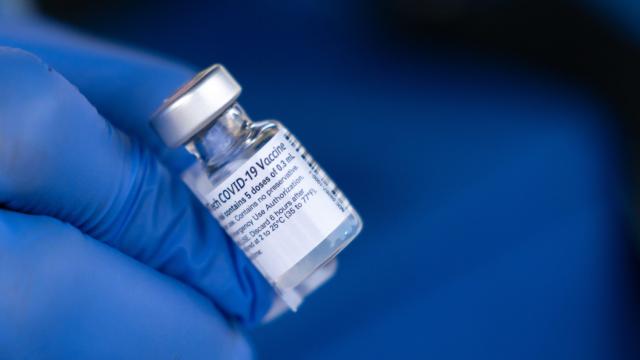On Friday, the incoming Biden administration detailed a new plan to make as many vaccine doses available as possible to the U.S. public. They plan to release all doses held in storage, breaking from the current strategy of stockpiling some of the available supply to ensure that people can get their second doses. Though the plan does have support from public health experts, more will need to be done to improve the lacklustre rollout of vaccines so far.
CNN was the first to report on the change in vaccine strategy. According to Biden transition spokesperson TJ Ducklo, President-elect Biden will support the release of all vaccine doses on hand to states and local jurisdictions for further distribution. Currently, the government withholds 50% of the total supply, allocating them three weeks later to make sure that people can have access to a second dose, typically taken a month after the first dose.
“The President-elect believes we must accelerate distribution of the vaccine while continuing to ensure the Americans who need it most get it as soon as possible,” Ducklo told CNN. “He will share additional details next week on how his Administration will begin releasing available doses when he assumes office on Jan. 20.”
Currently, approximately 6.25 million Americans have received their first dose of a covid-19 vaccine — far below the projected 40 million doses that were supposed to be available by the end of 2020. The slow rollout has led many experts to call for dramatic measures in shoring up vaccine distribution or supply.
Some proposals have included cutting the amount per dose in half, delaying the second dose by months, or only providing one dose at all to people. Early this week, however, the Food and Drug Administration shot down any changes to the dosing or scheduling of the Pfizer-BioNTech or Moderna vaccine, the two vaccines in the U.S. currently authorised for emergency use — at least not without further evidence of their safety.
This new plan isn’t meant to intentionally delay people from getting their second dose — ideally, that shouldn’t happen at all. And there is some evidence that it could improve the current vaccination situation. On Tuesday this week, scientists published research in the Annals of Internal Medicine to model the effects of a very similar strategy. Their plan called for 10% of the national vaccine supply to be withheld during the first three weeks for second doses, then 90% for the next three weeks after that, and finally 50% for as long as needed.
Compared to the current “fixed” strategy, the authors estimated that the new plan would prevent 23-29% more cases of covid-19 during that time, while more 2 million more people would receive their second dose, simply because they had the chance to get their first shot. This conclusion was based on the assumption that a steady supply of 6 million new doses would be produced in the country every week. But under less generous assumptions, like the vaccine supply dropping to 3 million new doses a week midway through, the benefits were still in favour of the flexible plan, if lessened. The only scenario where the current plan was still better, they concluded, would be where the vaccine supply plummeted and the first dose alone provided low immunity to volunteers.
“We do have to accept a small risk if the vaccine supply is disrupted. But if it isn’t massively disrupted, we can get more people vaccinated initially while still ensuring they get their second dose,” study co-author Joshua Salomon, a health policy researcher and professor of medicine at Stanford University, told Gizmodo over the phone.
Salomon said that his team wasn’t contacted by the Biden administration about their research. But he enthusiastically endorses their plan.
“We’re glad to have seen this happen — it’s exactly what we were advocating for,” he added.
So far at least, there haven’t been concerns about shortages in the vaccine production supply. By that same token, though, the available supply hasn’t been the biggest roadblock facing many states. According to a vaccine tracker created by Bloomberg, only three states have provided more than 50% of their currently available doses — with North Dakota at the top having allocated 62% per cent. States with large populations such as California have allocated only a quarter of their doses so far, while New York has allocated 37% of its doses.
Though providing more doses up front could very well speed up distribution of the vaccine to the public, it’s not the only solution needed. Experts and lawmakers have argued that more money and more manpower is needed locally to effectively provide the doses on hand to more people. Still others have called for more concise guidelines in the prioritisation of these doses, such as a simple age criteria at first.
“This isn’t sufficient on its own. We have to address the distribution bottlenecks we’re seeing on the local level too,” Salomon said. “But it’s an important piece of the puzzle. And whether it’s on the national or local level, if there are vaccines getting left in the freezer, then that’s something we have to fix as much as possible.”
The Biden administration has elsewhere indicated that it will be aggressive in trying to correct the dismal vaccine rollout, including using federal power to ramp up vaccine manufacturing. This new plan might be the first of many.
